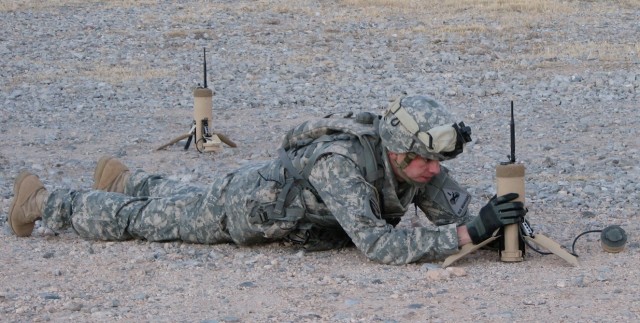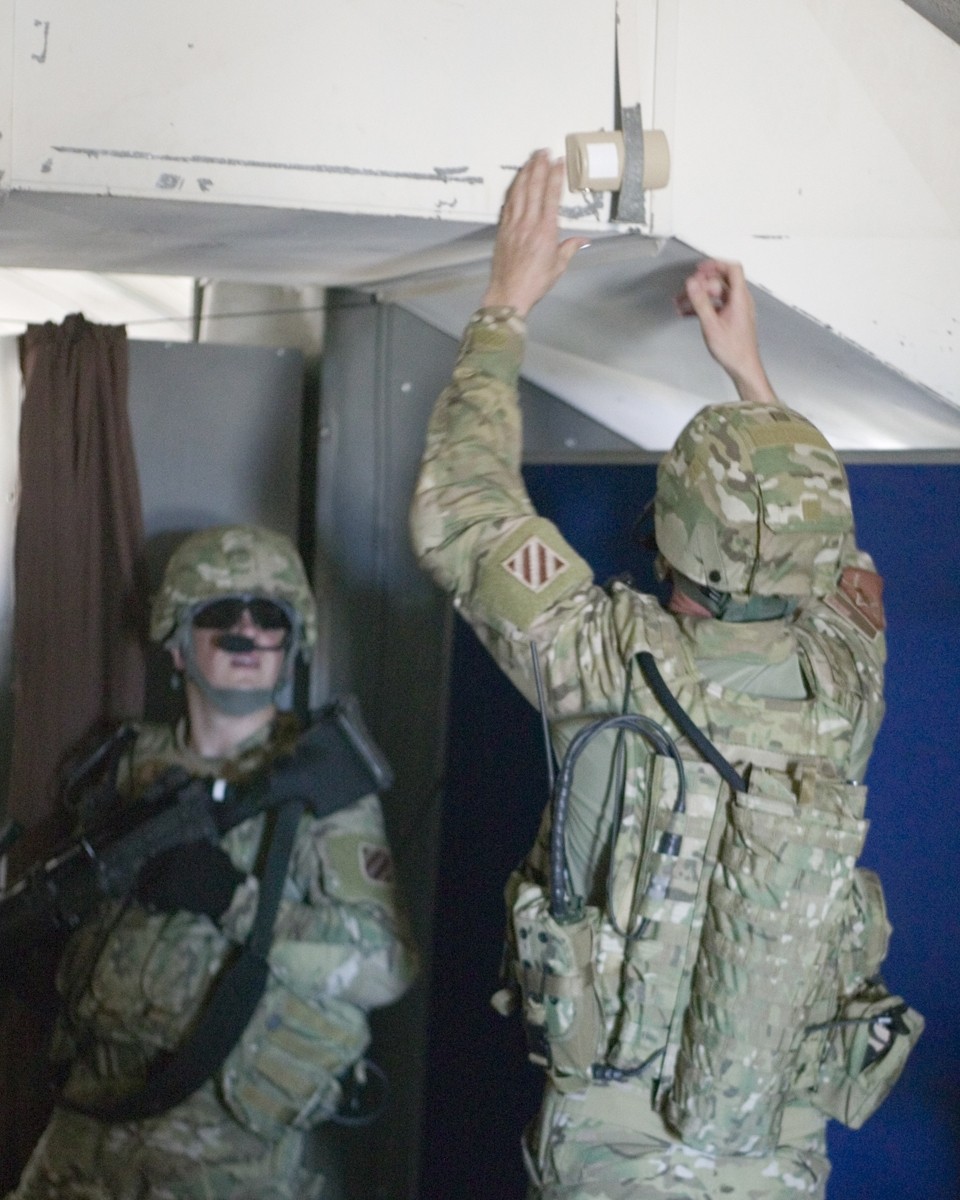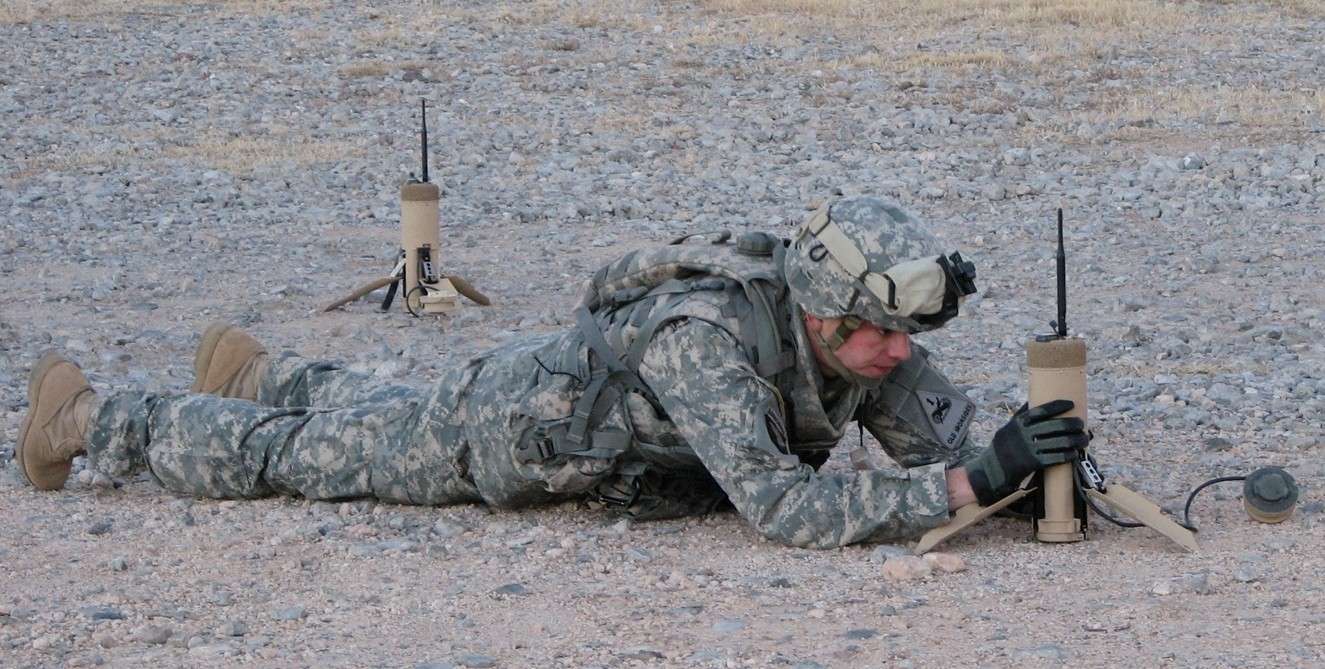WASHINGTON (Army News Service, June 11, 2008) -- In the high mountain desert of Fort Bliss, Texas, Future Combat Systems successfully completed a first Force Development Test and Experiment May 18.
Army Evaluation Task Force Soldiers tested FCS Spin Out 1 systems over the course of several weeks within conditions representative of today's operational environment in Iraq or Afghanistan.
Spin Outs are designed to bring Future Combat Systems capabilities into current force modular brigades in support of Army modernization. Spin Out 1 consists of four different, but inter-operable systems. They are being tested for fielding to the Army in support of combat operations in the near future, officials said.
Enhanced lethality is provided by the Non-Line of Sight Launch System, a box of rockets capable of delivering precision fires from great distances to lower-level tactical units.
Two sensor systems, the tactical unattended ground sensors, and the urban unattended ground sensors are designed to increase situational awareness and understanding across the force while minimizing Soldier risk by providing pictures and sensor warnings to the force.
The pictures and warning are provided through the fourth system in Spin Out 1, early network hardware. This hardware consists of a computer and pre-production joint tactical radio system, known as JTRS. Together these four systems are designed to enhance lethality and survivability of the modular brigade combat team by adding limited FCS capability to the force before the final version of FCS is available.
Capabilities of the systems will be placed in the hands of Soldiers and leaders at the platoon level and lower. Until now, most of the capabilities have been out of reach at that level and most often found at the battalion level and higher. Sensors will now be "networked" to the platoon level. This will provide situational awareness that contributes to more precise operations in environments where Soldiers must operate among people.
The Force Development Test and Experiment was conducted under the direction of the Training and Doctrine Command's Future Forces Integration Directorate.
Planning for the FDT&E began over two years ago and culminated in one of the largest user tests in Army history. Participants from across TRADOC and the 5th Brigade (Army Evaluation Task Force), 1st Armored Division deployed a company team consisting of two Bradley platoons, two Abrams platoons and a scout platoon supported by an NLOS-LS section and battalion headquarters. The unit performed attack, screen, defend, cordon and search, and force protection tasks against conventional and insurgent adversaries operating among a robust civilian population in both urban and desert terrain.
The operating environment was very similar to the current operational environment and what Soldiers see in theater every day. The event was monitored with data-collection instrumentation, data collectors from the Army Analysis Center and subject-matter experts from FFID and TRADOC proponents and centers.
It was the first time FCS equipment has been tested in continuous operations under stressful, realistic conditions in the hands of Soldiers. By any measure, officials said it was a huge success. Soldiers verified that the equipment performed to acceptable standards, and added operational value to their formation. Soldiers were able to validate that the equipment worked as designed, with the normal challenges one would expect in an early test, and, as Soldiers are prone to do, they also discovered new and different ways to employ the systems under combat conditions to provide the most value added.
Additional testing will continue as the Army Test and Evaluation Command gathers more data to support continued development, evaluation, and procurement. The 5th Brigade (AETF), 1st Armored Division has another user-defined developmental test planned for early fall 2008 where a small unattended aerial sensor and a small unattended ground vehicle will be integrated into the network that will support Soldiers, in addition to the four Spin Out 1 systems.
In November, current plans include yet another user developmental test that will directly place Soldiers and leaders of small units into the network with the Land Warrior System. This capability provides the location of each Soldier, increases available communications capabilities, and provides greater situational awareness to each leader and Soldier.
The Soldiers of the 5th Brigade (AETF), 1st Armored Division are putting FCS to the test. In the coming months, testing and evaluation will continue in order to get Soldiers in Iraq and Afghanistan the enhanced lethality, survivability, and situational understanding capabilities that FCS can deliver.
Completing all program development and test requirements for all Future Combat Systems technologies and capabilities will eventually lead to the creation of the Army's first FCS Brigade. In the interim, AETF will continue to evaluate, integrate and synchronize Army modernization efforts to provide brigade combat teams with selected FCS capabilities that reduce operational risk and help deliver an FCS Brigade Combat Team to Joint Force Commanders.
(Brig. Gen. James L. Terry is director of the Future Force Integration Directorate at the TRADOC Army Capabilities Integration Center. Col. Patrick L. Fetterman is the TRADOC Capabilities Manager for Future Combat Systems.)






Social Sharing